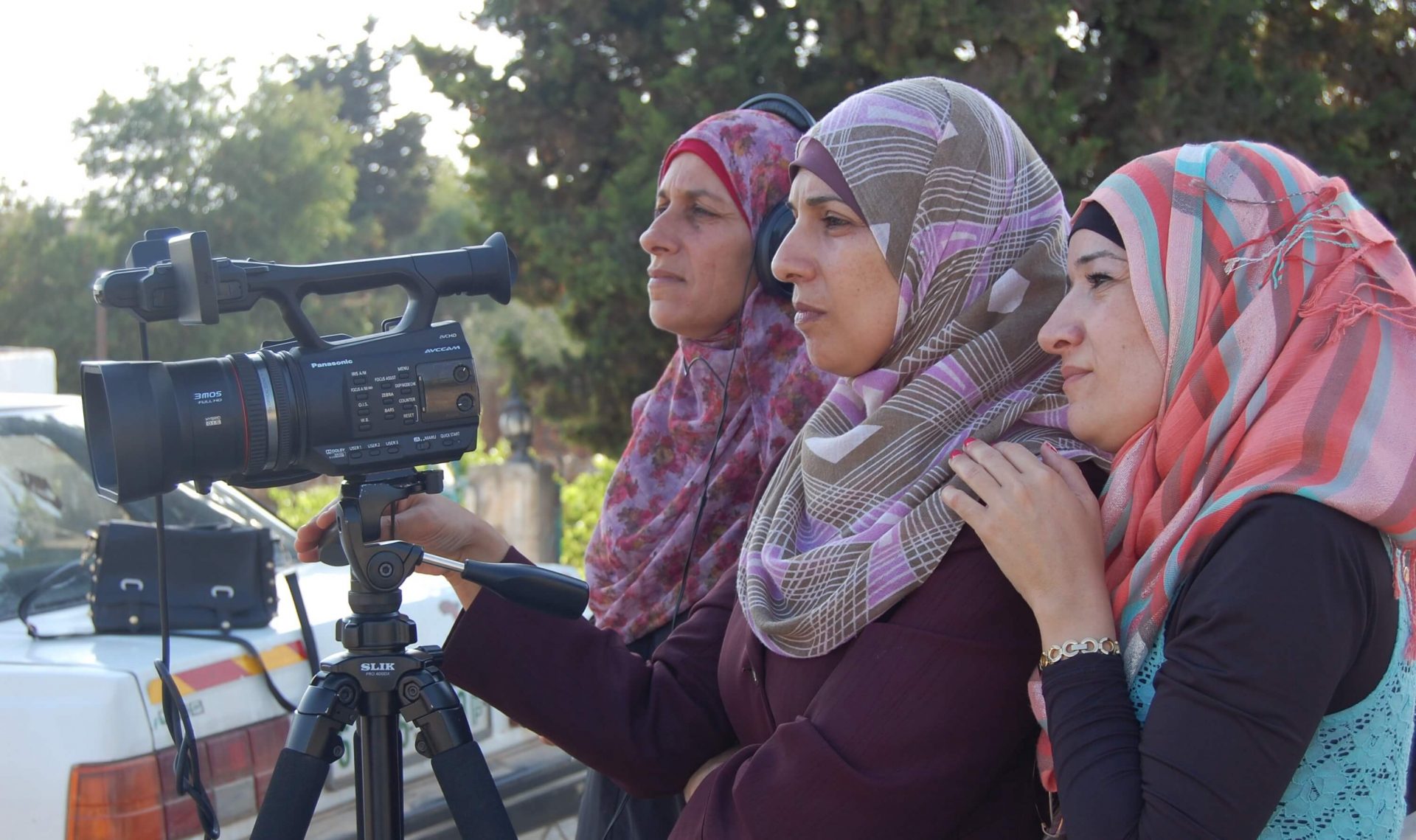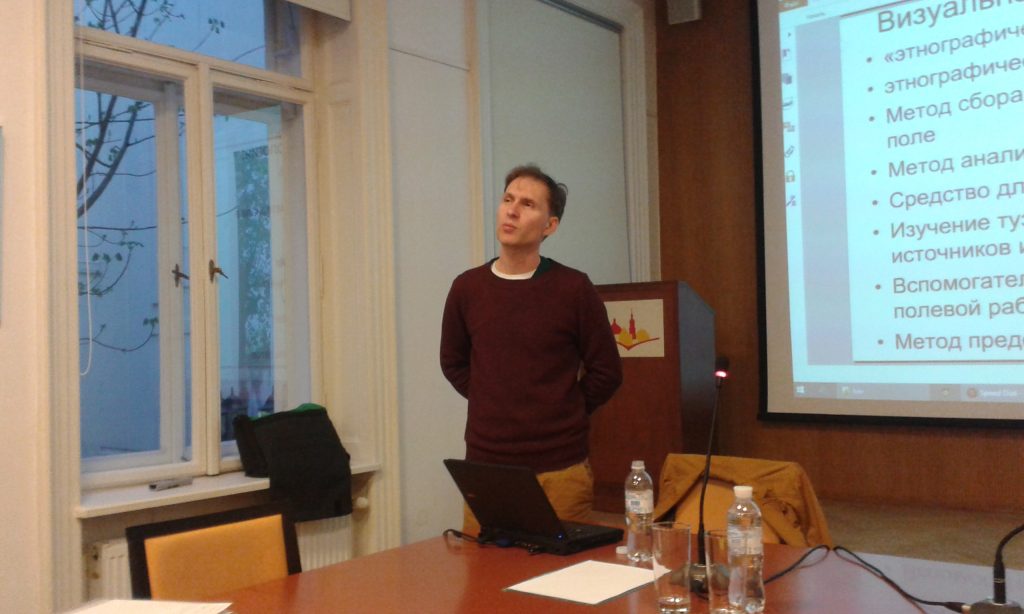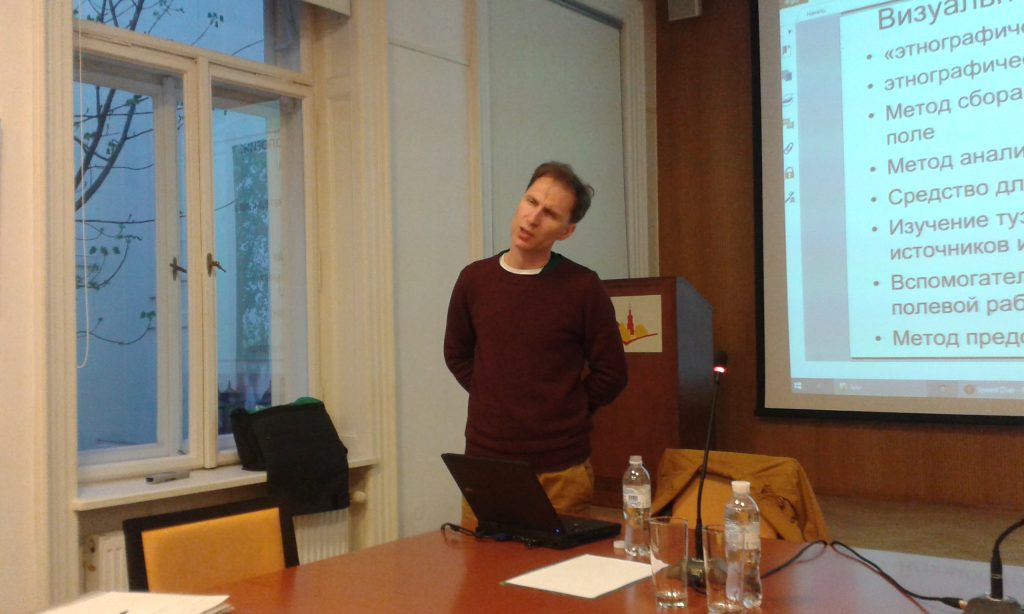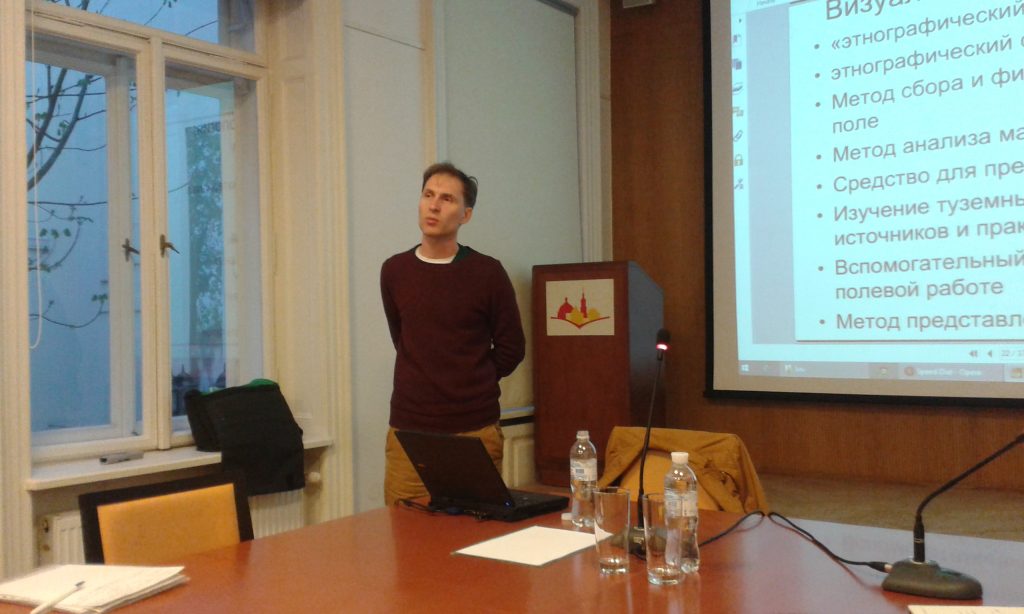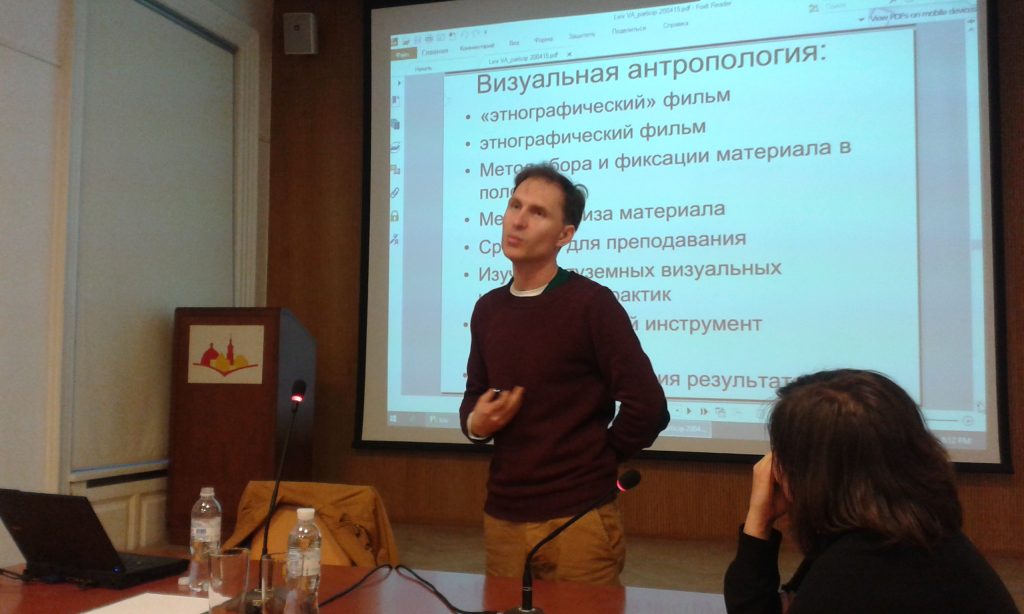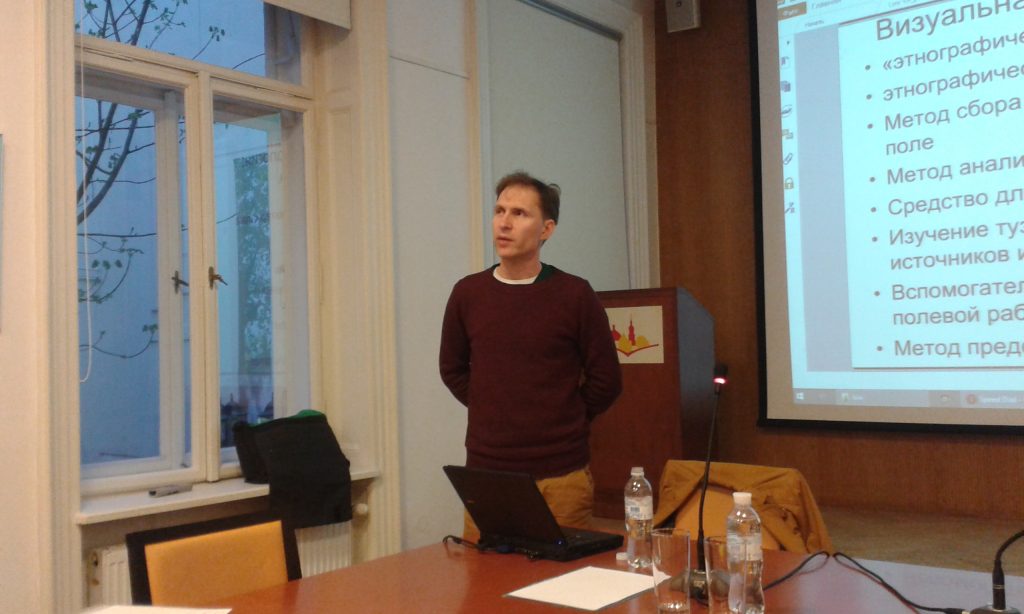Visual Anthropology as a Method of Research: Current Approaches
Ilya Utekhin
European University in St. PetersburgApril 20, 2015
Center for Urban History, Lviv
Many years of visual anthropology led to the fact that the research became a collaborative process where the participation of that which is being researched is a necessary condition: if we reject the hidden subject, the object of its own consent ends up as if on stage, and because it is interested in being seen from the "most correct," in its opinion, perspective, it begins to direct the researcher. In ethnographic projects of the last third of the twentieth century, sometimes there were attempts to make the move to the informant's active participation in the creation of ethnographic materials: for example, to distribute cameras to people and give them the task of shooting everything that, in their opinion, applies to the topic identified by the researcher. Some modern approaches in visual anthropology, which will be discussed during the lecture, foresee that the collection of primary materials as well as their interpretation can be done not only by the researcher, but also by his informants who are complicit in the research project.

Ilya Utekhin
is a professor at the Department of Anthropology at the European University in St. Petersburg. In the 2000s he worked in the field of cognitive science and experimental research of interactive communication, working in the Laboratory of Cognitive Studies at St. Petersburg State University. He also directed the program “Melancholy and Communication Theory” at the Philological Faculty of St. Petersburg State University. He is the author of scientific publications, among them a monographic study of life in communal apartments “Sketches of Communal Life” (Moscow, OIG, 2001, 2004) and the virtual museum of Soviet life “Communal Apartment.”
